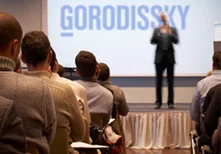New State Standard for Patent Research
4 October 2022For more than 25 years, a State Standard on Patent Studies (GOST R 15.011-96) has been acting in Russia. This State Standard has established unified requirements on the scope of and procedure for patent studies in Russia, required for implementation by all business entities.
On 19 September 2022, a new edition of this State Standard, issued as GOST R 15.011-2022 enters into force, replacing the old one, mainly due to a need to update a number of old terms, introduce new concepts, adjust the forms of reporting documents, and set modern patent studies approaches and methodologies.
One of the strong points of the new Standard is clearly dividing patent studies into types. In particular, the Standard determines specific types of patent studies by correlating its conduct with the development stages and technological life cycle phases. Thus, prior art patent studies are supposed to be conducted at the initial R&D stage, at defining the development areas, when the results of the studies can themselves become the R&D basis for further developing the identified prior art by creating new technical solutions. Patentability patent studies are associated with the development stage of a specific technical solution when the results of studies can be used for preliminarily evaluating prospects of obtaining patent protection for such a solution. Freedom-to-operate patent studies are linked to products that are about to be launched into manufacturing. The studies identify risks of infringement of thirdparty patent rights in manufacturing and (or) sale of a manufactured product or developed technical solution in a particular country.
Another type of patent studies are contained in a separate section, which is named Target Patent Studies.
Among the target patent studies are:
- Analysing a strategy for protecting results of intellectual activity;
- Analysing a developer’s intellectual property portfolio (scope and content of exclusive rights);
- Analysing a unique nature of a solution of an item appearance in an industrial design or artisan industry and its patentability as an industrial design;
- Analysing means of individualization for distinctiveness and registrability;
- Analysing a complex item to identify elements capable of legal protection; etc.
The list of objectives for the target patent studies is non-exhaustive, thereby allowing other studies, e.g., searching and analysing information for challenging patent validity, to be conducted based on methodology and with reporting forms provided by the Standard.
Requirements for reporting results of patent studies are contained in a special section of the Standard, with samples provided in appendixes of the Standard, thereby suggesting use of unified forms for reporting results of particular types of patent studies.
The new edition of the Standard introduces long-waited clear definitions of what, in the sense of the patent studies, the prior art and technical level are. Introducing those two specific definitions, clearly distinct from alike by wording, but different in essence statutory definitions of prior art and technical level for patentability conditions of inventions is indeed an outstanding feature of the new Standard. Provisions of the old Standard being silent on both definitions resulted in vagueness and confusion. Now, the Standard clearly defines that prior art is information that has become known in the world before the start date of patent studies, and technical level is a characteristic of the technological item, studied by comparing the parameters describing its technical advantage with the corresponding parameters of its peers.
Another new feature of the Standard is recognizing “patent landscape” as a type of patent study. The new Standard defines patent landscape as the results of an analytical information study of patent documentation, which reflects a patent situation in a specific technology or a patent activity of innovators as a function of time and geographical spread, based on statistics and graphically presented. Introducing such a tool in the State Standard demonstrates general recommendation to use it as one of the studies, certainly not instead of the first mentioned above three main studies, but more as visually understandable map-looking document showing general tendencies.
Finally, the new Standard gives a special interpretation of the concept of information search, as a search other than patent and based on solely non-patent literature.
Undisputedly, the developers of the new Standard made it much clearer than the old Standard, which was very important in the situation when local Russian businesses started active filling in the gaps for the local manufacturing of many goods previously imported. Following the methodologies set forth in the new Standard definitely allows avoidanceof patent infringement and properly defining a task for parent studies with the expectation of clearly provided results by utilizing reporting forms provided by the Standard. Our own long-term experience in the Patent Studies Department of Gorodissky and Partners Law firm shows that the methodology and reporting forms as set forth by the Standard are quite good, accepted not only by local but also by foreign companies interested in local and worldwide patent studies.
To access this website, we request that you read and accept the Terms of Use.









